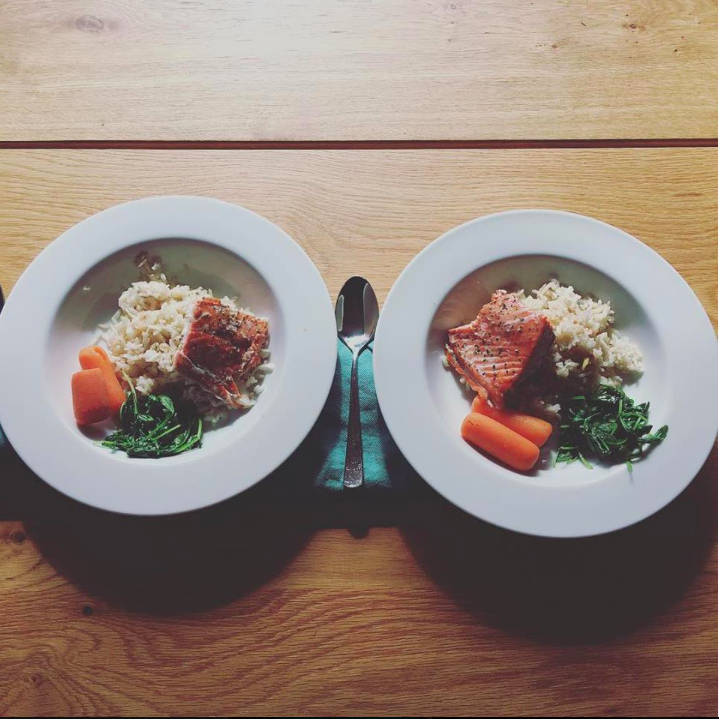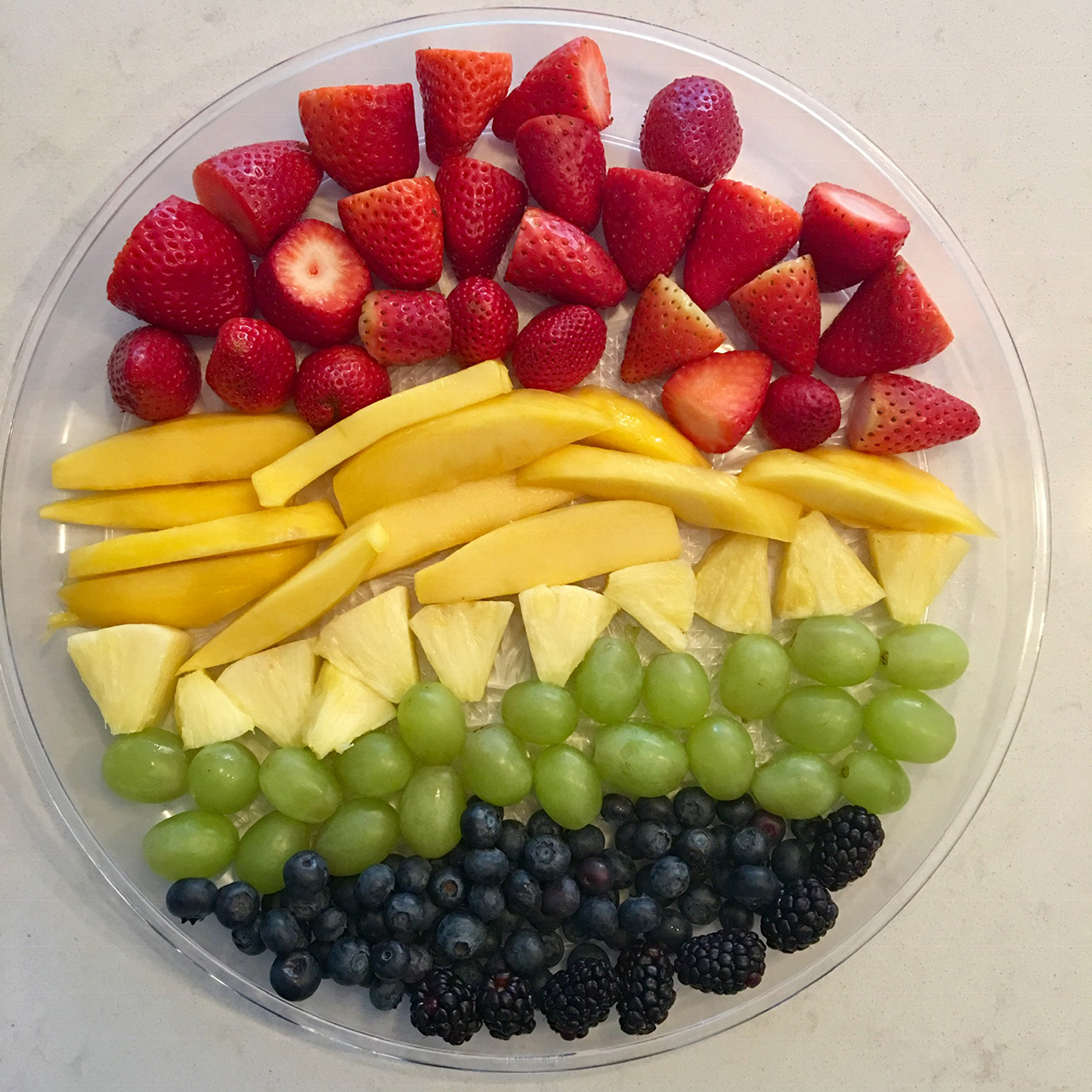
Let’s be real. Getting our kids to eat well can feel like a constant uphill battle that repeats itself at least 3x per day. It can leave us feeling frustrated, worried and drained. As a certified health coach and mom of two little boys, six and four, I know your struggle. I want to share some strategies that work in our family. I hope they’ll help you too.
1) Reject “kid food.”
U.S. retailers sold 35.06 billion dollars worth of children’s food and beverages in 2015. That number jumped to 41.09 billion U.S. dollars in 2018. Children are an especially important target group to food marketers since they can influence buying decisions while grocery shopping via the “whine factor.” Food and beverages marketed to children are typically highly processed and loaded with sugar, salt, inflammatory fats, artificial food dyes, and artificial flavors.
If these foods aren’t something that you or I would eat, why would we feed it to our kids? If we don’t want them eating it, don’t bring it in the house.

There’s no reason that children’s food needs to be a separate category. Children can and will eat more than chicken nuggets, hot dogs and pizza but only if we present it to them regularly and make it the family norm.
Making one family dinner each night is an excellent way to expand kid’s palates and makes it easier on the cook (no giving into demands for PB&J or cereal because they don’t like what’s for dinner). You can introduce new vegetables, whole grains like brown rice or farro, high-quality proteins, spices, and fresh herbs. This summer when our basil plants were in full bloom, the boys would fight over who got to snip the basil leaves that were going on top of the tomatoes and fresh mozzarella.
When you’re eating out, skip the kid’s menu. It’s where you’ll find the worst quality foods. Get into the habit of ordering an entree to share or a couple of small plates. Y

2) Be as stubborn as they are
When they fold their arms, push away their plate and refuse to eat, push that plate right back. When we give in to their pickiness too quickly, we encourage it. Kids need to be introduced a food up to 30x before they like it. Remember how you hated Brussels sprouts as a kid but now you love them? We need to give our kids the same opportunity to come around with their food preferences.
Anyone who’s lived with a four-year-old knows that they can be fickle. Finn is no exception. ” I like oranges.” “I don’t like oranges.” “I like cheese.” “I don’t like cheese.” This morning I was met with “I don’t like oatmeal,” to which I responded, “Oh, well that’s what we’re having today so eat up. It’s yummy, and it’s good for you. Would you like to add your raisins?” He stared me down for a moment, hoping that I’d offer to make something else. I stared right back. “Okaaay mama! he grumbled.” He quickly forgot that he doesn’t like oatmeal as he got busy sprinkling on the raisins.
Roll with their daily changing tastes but don’t pay them too much attention. Continue to present them with nutritious foods like it’s your job because it is. Don’t make the mistake of letting them hear you say “She’s such a picky eater, she only eats XYZ.” Acknowledge their opinion but don’t make a big deal of it. This too shall pass.
It’s essential to create a family food culture that “we try.” We may not love everything, but we try it. Can be just a single bite, or a single leaf of baby bok choy as was the case during last night’s dinner. Traveling, exploring new restaurants or even visiting an Asian grocery store and looking at the different vegetables, fruits and seafood is a good way to introduce new tastes, smells, flavors. Expand their palate. Cultivate an open mindset at a young age. Kids will push boundaries as much as they can. Help them understand that the “norm” in your household is to be open-minded and try.
3) Let them get their hands dirty
Encourage your kids to be involved in the process any way they can. Growing a vegetable garden or even having a few plants in a container garden is a beautiful way to teach children where food comes from. Last week Wyatt took out paper and crayons and sketched out what he wants to plant in the garden this summer: carrots, potatoes, watermelon, and sunflowers were at the top of his list. Little hands can help plant, water, weed and pick. They can also wash, chop, stir and cook.
It can also be as simple as letting them choose their favorite vegetables and fruits from the grocery store. Their choices may surprise you. Last week Wyatt picked out radishes. I went with it, thinking he wouldn’t eat them but I would. It turns out the kid likes radishes.
Sure, it takes more time to garden, shop, and

4) Let them get hungry.
Snacking encourages picky eating. When kids fill their bellies with goldfish crackers, granola bars, and fruit snacks (sugar, salt, and starch) in between meals, they’re going to pick at their meals. When we overdo it with snacks (because we’re worried that they didn’t have enough to eat at their last meal), they never have a chance to get hungry. We’re creating a vicious cycle.
We need to build up an appetite before meal-time. We can do this by keeping meals and snacks on a regular schedule. Our boys get home at 2:45 pm and have an after-school snack of fruit, cheese, nuts, or yogurt. We eat dinner at 5:30 so when the “I’m HUNNNNGRY!” complaints start rolling in at 4:4pm as I’m trying to cook dinner, raw veggies come to the rescue. I offer them bowls of cut-up carrots, peppers, or cucumbers. Usually, they’ll munch them until dinner’s ready, but sometimes Finn will refuse and ask for crackers. That’s the moment that I hear myself becoming my mom and say “If you’re not hungry enough to eat carrots, you’re not actually hungry.”

5) It’s up to you
You are the role model. They’re always watching. This is a huge responsibility but also a great opportunity. You set the tone for what’s in your fridge, what meals look like, and what your family eats. Want your kids to eat more vegetables and eat less sugar? Then you need to eat more vegetables and eat less sugar.
Don’t get stressed out and expect perfection. Celebrate small wins. If your previously non-vegetable eater is now eating carrots, that’s a win! Keep building on that. Never give up on the project of raising ‘
